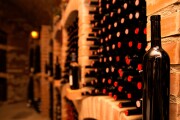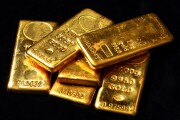
It's a small art fair saddled with massive expectations.
Well before it opened on Wednesday,
Within that framing, the success (or failure) of the fair's first edition, which runs through Sunday, Oct. 23, could be seen as a bellwether for the city's art scene as a whole. If it does well, it's a sign that Paris is back. If not … tant pis.
It's a neat narrative, and perhaps it's even partially accurate. But as the doors opened promptly on Wednesday at 10 a.m. inside the Grand Palais Éphémère, a temporary structure used for events while the Grand Palais is renovated, dealers being dealers were mostly concerned with the pragmatics of how much art would be sold, and to whom.
"I think it's a banality to say that Paris is the place to be nowadays due to Brexit, even though it's true," says the French dealer
Poggi's booth was filled with contemporary art but also showcased a €2.5 million painting by
But, he adds, he's not overly focused on sales. "I'm not into that," he says. "I find it very vulgar."
A Very French Fair
Paris+ par Art Basel (an unwieldy name, and one that almost no one uses, instead simply calling it "Paris+" or "Art Basel Paris"),
After Art Basel's new fair was announced in late January, the organization, which is a subsidiary of
The goal, Spiegler continues, was to keep the regional flair of the French fair, but attract an international swath of collectors who'd perhaps stayed away from FIAC.
"We have a contractual obligation to the Ministry of Culture as part of our deal, to maintain the same level of French galleries in the fair as FIAC had before," Spiegler says. That said, Art Basel "has more than 30 people working with VIPs all over the world," he continues, "and you'll see that reflected in who shows up to the fair this week."
Big Collectors
The fair's first day opened to a calm, comparatively subdued line of well-dressed collectors who shuffled, unhurriedly, through the doors. But after a few hours had passed, aisles and booths for the fair's 156 galleries were packed with people speaking what felt like an equal division of French and English.
"It's very
His companion, the consultant and arts patron
The fair, she adds, is filled with "big collectors, and not just French ones."
Bigger Sales
Smaller galleries' booths were indeed swept through. "Sales are going well," says Alexander Hertling, standing in the booth of his Paris-based gallery
Similarly, Hertling says that "people are fighting right now" over a €35,000 ($34,179) painting by the highly sought-after French artist
There was similar enthusiasm in the front of the building, where the mega-galleries were clustered.
There, the dealer
"I sometimes felt that London is a business place and transactional, and Paris was more about the beauty of the place," Ropac says. "And this changed, because transactions are much easier here now than they used to be."
Other large galleries say that they notched similarly robust sales.
Hauser & Wirth reported nine sales including paintings by George Condo for $2.65 million, Avery Singer for $800,000, and
So: did the fair's day-one success mean that Paris is now the continent's cultural king?
"The fact that Art Basel is here is very good for our business," says Sarah Lévénès, a director at
Even a week before the fair, her gallery held an opening that was attended by Chinese, American, and British collectors, she says. "We met new people, and had a great exchange."
Perhaps, Ropac suggests, the fair's success could mean that Paris is simply more appealing to visit for a few days.
"In the last few years London just had a more international crowd, with American collectors, and this year it's reversed," he says. "It doesn't matter where you do it, it matters if you have the players. And they're here, now."








